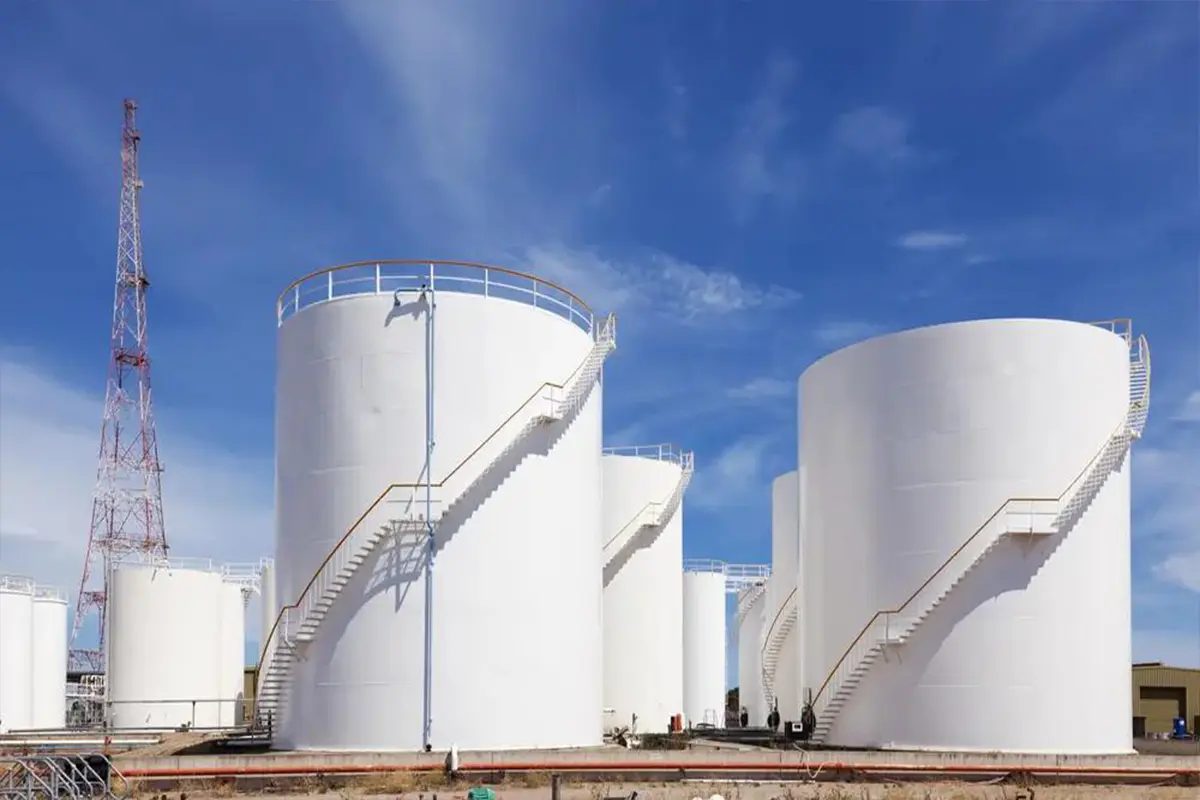Types of Tank Paints and Their Applications

Table of Contents
Types of Tank Paints and Their Applications
Painting tanks is one of the most important processes in various industries. Types of tank paints not only enhance the appearance but also protect the metal or tank body against environmental factors, corrosion, and chemical damage. Choosing the right paint can extend the service life of a tank and reduce maintenance costs. In this article, we will review the most common types of tank paints and their applications.
The Importance of Tank Painting
Painting tanks is not just for aesthetics. Paint acts as a protective coating that prevents direct contact of moisture, chemicals, and sunlight with the tank surface.
Main reasons for tank painting
- Preventing rust and corrosion
- Extending the service life of tanks
- Identifying stored materials based on color standards
- Reducing heat absorption in outdoor tanks
- Increasing industrial safety

Types of Tank Paints
1. Epoxy Paint for Tanks
Epoxy paint is one of the most widely used coatings in industries. It has excellent resistance against moisture, chemicals, and mechanical stress.
Advantages:
- Excellent corrosion resistance
- Strong adhesion to metal surfaces
- Ideal for water, oil, and chemical storage tanks
Applications: Water tanks, oil & gas tanks, industrial and chemical tanks
2. Polyurethane Paint for Tanks
Polyurethane paint is used as a finishing coat and is known for its gloss and UV resistance.
Advantages:
- High resistance to UV rays
- Glossy and aesthetic finish
- Long-lasting performance outdoors
Applications: Outdoor tanks, oil & petrochemical industries
3. Alkyd Paint for Tanks
Alkyd paint is one of the oldest industrial paints, still used in many projects.
Advantages:
- Affordable cost
- Easy application
- Moderate weather resistance
Applications: Small industrial tanks, warehouses, temporary solutions
4. Zinc-Rich Paint for Tanks
This paint contains high levels of zinc particles and provides cathodic protection against corrosion.
Advantages:
- Superior rust protection
- Cathodic protection for metals
- Suitable for harsh and humid environments
Applications: Oil & gas tanks, marine industries, underground facilities
5. Fireproof Paint for Tanks
In industries like oil and gas, tanks need fire resistance. Fireproof paints provide safety in case of fire.
Advantages:
- Increases resistance time against heat
- Improves workplace safety
- Prevents rapid explosions
Applications: Petrochemical tanks, gas industries, high-risk environments
Tank Color Standards for Material Identification
In many industries, tank colors follow a standard coding system that indicates the type of stored material.
Examples of standard colors:
- Blue: Drinking water tanks
- Green: Non-hazardous chemicals
- Red: Flammable materials
- Yellow: Gases or hazardous substances
- Silver/White: To reduce solar heat absorption
Steps of Tank Painting
1. Surface Preparation
Cleaning the tank surface using sandblasting or wire brushing to remove rust and contaminants.
2. Primer Application
Applying a primer layer improves adhesion and prepares the surface for topcoats.
3. Intermediate and Final Coats
Epoxy or zinc-rich paint is applied as an intermediate coat, followed by polyurethane as the final layer.
4. Quality Control
After painting, thickness, coverage, and uniformity of the coating are checked carefully.
Key Factors in Choosing Tank Paint
- Environmental conditions (humidity, temperature, sunlight)
- Type of stored material
- Budget and maintenance costs
- Expected lifespan of the coating
Conclusion
Types of tank paints and their applications play a vital role in extending durability, safety, and aesthetics of industrial structures. From epoxy and polyurethane to zinc-rich and fireproof paints, each has unique properties and advantages. Selecting the right tank paint ensures cost-effectiveness, safety compliance, and long-term performance in industrial environments.
Latest articles
Latest products






